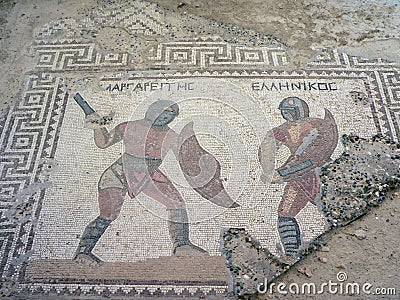The worth of the individual and democracy began in Greece. They were masters of philosophy science , fine arts, geography, medicine, legal systems, and astronomy. Greece was a mountainous country and was surrounded by the Aegean, Mediterranean, and Ionian sea. Greek domestic buildings were far less impressive than public buildings. Within homes there was cisterns or impluviums which were structures to collect rain, and it was an opening in the roof. The Floors within homes were plastered and painted with mosaic techniques and had mythological figures, animals, and flowers in them. The walls were unflustered mud bricks and had paintings and murals on them. The design motif in this era was floral or marine, egg and dart, and greek fret or key. Paint application had divisions which were dado, main field, and cornice, and also used trompe l'oeil techniques were used. The interior spaces featured windows placed high on the walls, the doors were made out of wood, stone, and marble frames. Materials and construction techniques in furniture incorporated leather and cords with inlays of gold, ivory, and gems. The seat furniture consisted of thrones, klismos, kline, diphros and the invention of the lathe on the legs of the chair.

One of the most beautiful architectural monuments during this era was the Parthenon. This temple was dedicated to the goddess Athena. It is the most import ant building of classical Greece, generally considered the culmination of the development of the doric order. The entablature bowed in the center , the columns inclined inward, the shafts tapered, heavier corner columns, and distance between each column.

Doric Column

Ionic Column

Corinthian column
Another element that I considered interesting within this time era was the classical orders of architecture. These columns consisted of a base, shaft, capital, entablature, architrave, frieze, and cornice. There were three different types of order which were the doric, ionic, and corinthian. Neoclassic architecture really incorporated these columns within design. These columns were developed by the Greeks but eventually adopted by the Romans.
Like I mentioned earlier mosaic techniques were incorporated in the floor. Pebbles, glass, an stone were all used to create a beautiful pattern in the floor.
Here are some current applications I found. The first being this exterior of a home showing Ionic pillars lining the front view of the house. These pillars still make a home look beautiful yet historical.
The second example I found of a modern application was this interior of a home that incorporated the greek key design as the borer on the walls as well as the geometric shaped mirrors.
Below is a link on the the architecture in ancient Greece.
https://www.youtube.com/watch?v=ZDs8c1-DJsE






No comments:
Post a Comment